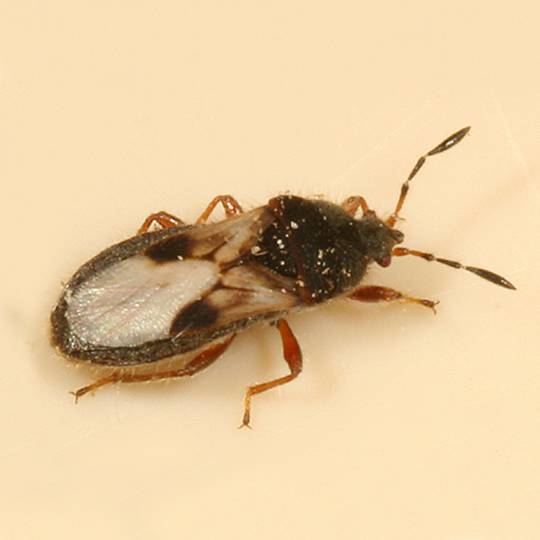
Chinch bugs (blissus leucopterus) may be small in size, but they can do massive damage to your lawn. These miniscule bugs—adults are only about 1/6 of an inch long—feed on the stems of turf grass. Not only do they suck the blades dry, but then they inject it with toxins.
Chinch bugs thrive on dryness. They live and breed in arid, hot, and sunny environments; and they cause the most damage during the hottest and driest months of the year. There are two species of chinch bugs in the U.S.:
- Hairy Chinch Bugs: prefer northern turfgrasses such as Kentucky bluegrass, perennial ryegrass, and fescues.
- Common Chinch Bugs: settle for turfgrasses, but favor grain crops such as corn and wheat.
During the winter, chinch bugs chill in protected areas, like hedgerows and road sides, and then emerge in late spring to feed and breed. Come summer, females can lay about 200 eggs in blades of grass. Once hatched, the young will suck the sap from the grass and stem, eventually turning the grass yellow then brown.
Chinch Bug Signs and Symptoms
If you take care to regularly feed and water your lawn and it still shows signs of drought damage, you may be dealing with a chinch bug infestation. Turf should respond quickly to watering if it’s only thirsty—but if it has been overtaken by chinch bugs, it will not. You may also notice yellow spots of grass next to driveways, sidewalks, or the foundation of your home; areas that are naturally warmer and will, therefore, attract the heat-loving chinch. Particularly in hot, dry weather, small yellow patches will gradually become large sections of damaged turf.
You can visually inspect the grass in the suspected area for signs of chinch bugs. At an early age, they can be light red to orange in color with a white stripe on their abdomen. As adults, they turn to black with white on their back between their wings.
Confirm an infestation with the tin can trick:
- Cut both sides off of a tin can.
- Push one end down into the ground in a spot where the yellow-brown grass meets green grass.
- Pour water into the can so that the water is above grass level.
- Wait ten minutes.
- If you have chinch bugs, they will begin to float to the surface of the water.
Chinch Bug Prevention
Guarding against chinch bugs is a cinch when you maintain a healthy lawn:
- Mow at the maximum recommended height.
- Fertilize the appropriate amount. Overfertilization with nitrogen can lead to more chinch bugs, so use small amounts during the summer or use a slow-release formula.
- Aerate the soil.
- Water regularly, especially during very hot and dry weather.
- Remove excess thatch from your lawn with a special dethatching rake or by hiring a professional lawn care service.
There are insecticides that can help prevent and control chinch bug populations. They are usually more successful if applied early on. Treatments are available in granular and liquid form. Granular insecticides can be applied with a standard fertilizer spreader. Liquid sprays can be applied with a hose-end sprayer. Adding a small amount of dishwashing solution to your liquid spray can help improve control and coverage of the area. If chinch bugs are damaging just a small section of the yard, apply a spot treatment of insecticide first.
Chinch bugs reproduce rapidly and can develop resistance to an active ingredient in treatments just as fast. Try to rotate the type of insecticide you use if you need to treat the lawn more than once. For chronic chinch bug problems, contact your local lawn care specialist. Cardinal Lawns can help you determine the treatment plan most likely to achieve lasting results.
Need Help with Chinch Bugs?
Call Cardinal Lawns today at 614-808-4446 and let's talk about how we can help treat for Chinch Bugs and other common Ohio lawn pests.
Get a Free Quote